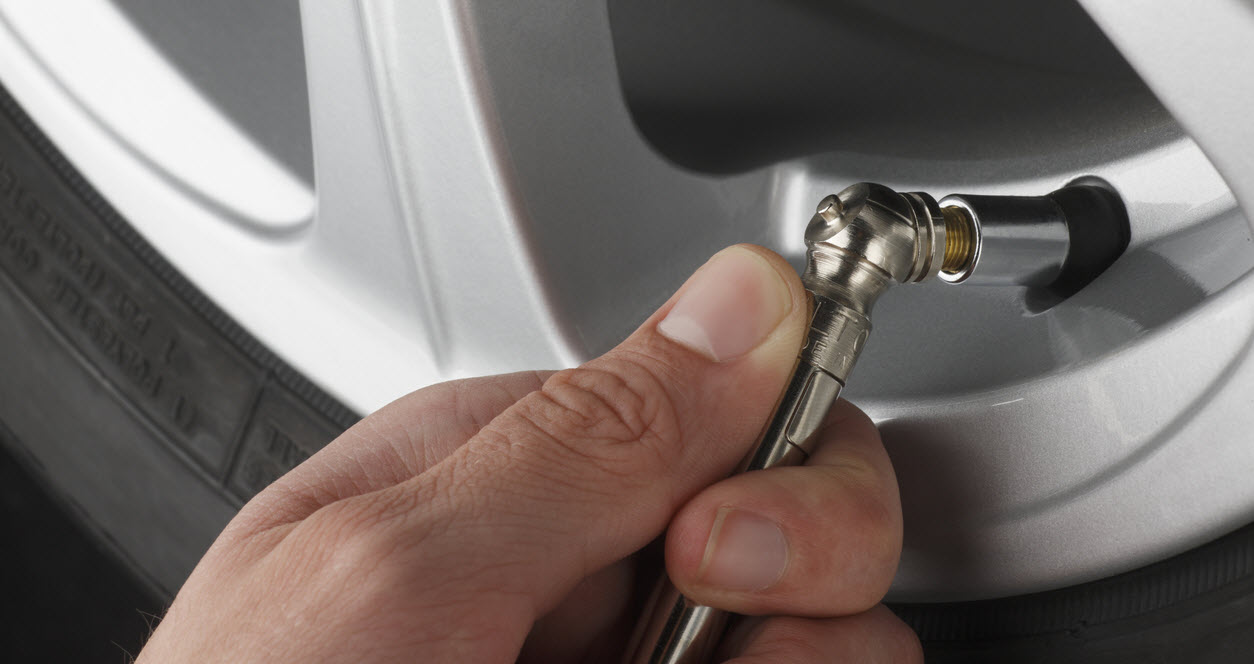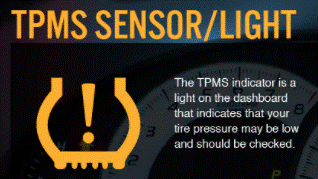| By Chilton Staff |
The automotive tires that keep our vehicles rolling down the road are rated by the manufacturer to handle specific loads at predetermined air pressure. When you keep the optimum air pressure in the tire, you maximize tire performance and fuel economy.
What makes it difficult to keep tire pressure consistent? According to tire industry data, 85 percent of all tire air-pressure losses are the result of slow leaks that occur over a period of hours, days, or months. Tires typically lose air pressure through natural leakage or permeation at a rate of about 1 pound per square inch (psi) per month. In addition, tire manufacturers say that seasonal climatic changes result in air pressure losses of 1 psi for every 10°F decrease in the ambient temperature.
In the Northeast part of the country, differences between summer and winter temperatures average about 46°F, resulting in a net loss or gain of nearly 5 psi in air pressure. This variation is enough to dramatically affect handling, traction, and durability of the average tire if the pressure isn’t adjusted seasonally. Even temperature fluctuations during the day can make a dramatic difference, as variations between nighttime and daytime temperatures in this part of the country can average 20°F and result in pressure changes of more than 2 psi.
No matter where you are, temperature fluctuations, whether large (such as in Arizona in the summer) or small (as in balmy Mumbai in the winter), will affect your tire pressure, so careful monitoring is important.
During a February 2001 survey, crash investigators measured tire pressure on each vehicle coming into a gas station and compared the measured pressures to the vehicle’s placard pressure. They found that about 36 percent of passenger cars and about 40 percent of light trucks had at least one tire that was at least 20 percent below the placard pressure.
According to U.S. government statistics, 660 people die and 33,000 are injured every year due to tire pressure–related accidents. Improper tire pressure costs an extra $3.7 billion in fuel annually, and every year causes 4.5 million tires to need replacement before their designed life span.
The Mechanical Gauge
In the beginning was the tire pressure gauge, a simple device that, once applied to the valve stem of a tire, would indicate the air pressure inside a tire. The most ubiquitous of its many variants was (and still is) the pen-style gauge. Here’s how it works:
Inside the pen (tube), a piston made of soft rubber is forced by air entering the gauge against a calibrated spring that runs the length of the tube. On the opposite end of the tube is a stop. The distance the piston travels is relative to the pressure in the tire.
While using this type of mechanical gauge is simple, keeping the tires at the correct pressure is more difficult. First, there must be a convenient supply of dry, vapor-free compressed air to inflate the tire. This isn’t a problem for the technician in a shop but may present a problem for some motorists. Second, the gauge in use must be accurate. Gauge accuracy may affect correct pressure by 3 psi or more. Lastly, most vehicle owners don’t check tire pressure enough. An American Automobile Association (AAA) poll suggests that 85 percent of motorists don’t know how to check tire pressure.
The Tire Inflation Pressure Label
Hopefully, you see the value of checking your tire pressure regularly. The first step is to determine the correct tire size and air pressure for your vehicle. You can check ChiltonLibrary for the proper specification. For vehicles built after 2002, a placard and label must be located on the driver’s side B-pillar. If a vehicle doesn’t have a B-pillar, then the placard and label must be placed on the edge of the driver’s door. If the vehicle doesn’t have a driver’s side B-pillar and the driver’s side door edge is too narrow or doesn’t exist, the placard or placard and label must be affixed to the inward-facing surface of the vehicle, next to the driver’s seating position. Most people aren’t able to locate or don’t know about their vehicle’s information placard—this small sticker contains key information about the vehicle, including the correct tire pressure for the front and rear tires. In most vehicles, the owner’s manual will direct you to the vehicle information placard’s location.
The tire inflation-pressure label contains gross vehicle weight, correct tire size, speed rating, and cold inflation-pressure information.
Tire Pressure Monitoring Systems
The tire pressure monitoring system (TPMS) reports real-time tire-pressure information to the driver of the vehicle and is mandatory on all vehicles produced for sale in the United States since September 2007. If the vehicle is equipped with it, why not let the TPMS take care of the tire pressure? There’s one good reason: Many of these systems only alert the driver to low tire pressure when the tires lose 25 percent of its pressure. As we stated earlier, pressure losses of only 5 psi (15 percent on a tire inflated to 32 psi) can dramatically affect the handling, traction, and durability of the average tire.
Offer your library patrons more car-care guidance with ChiltonLibrary!




